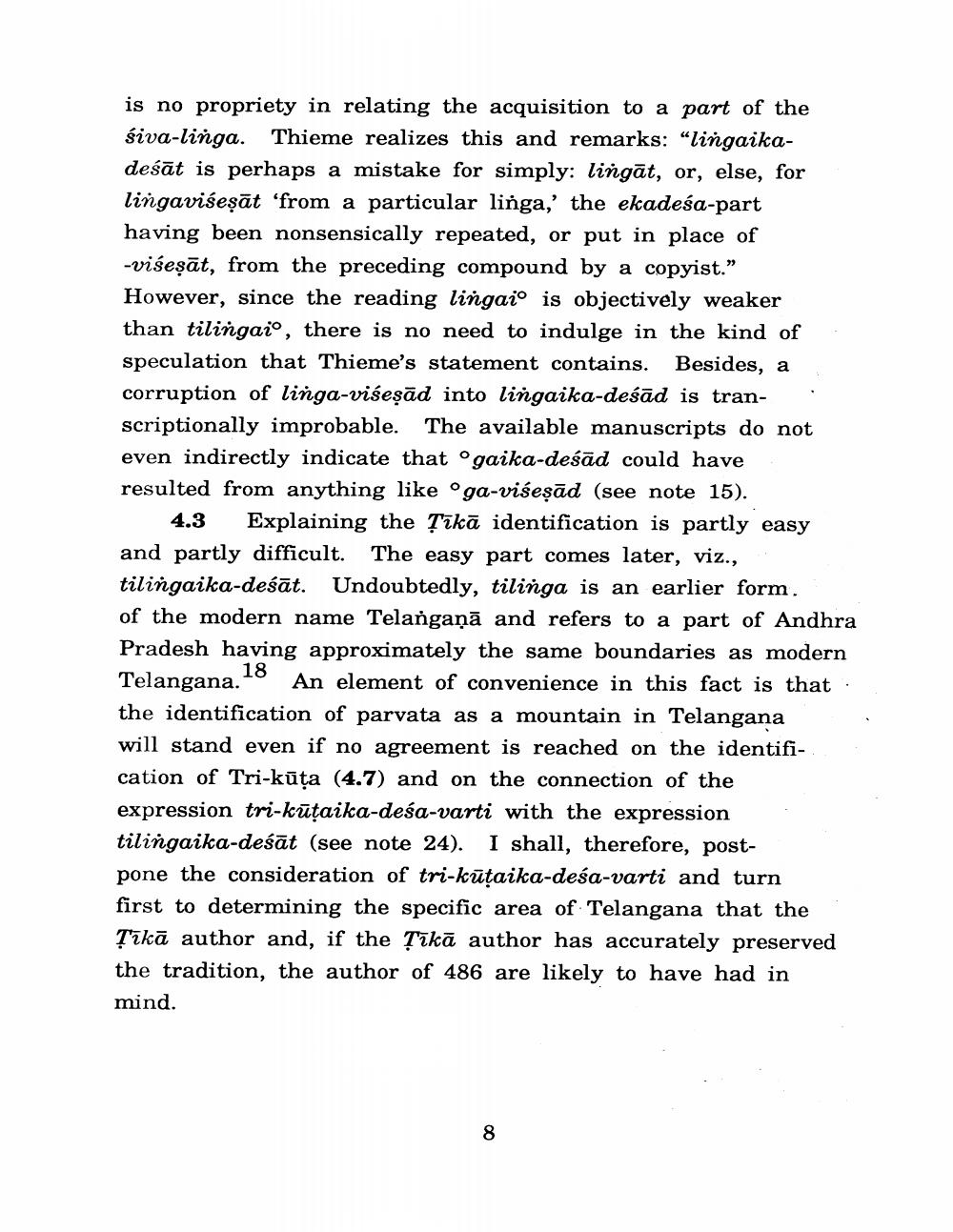Book Title: Paninian Studies Author(s): Ashok Aklujkar Publisher: Ashok Aklujkar View full book textPage 8
________________ . ran- is no propriety in relating the acquisition to a part of the śiva-linga. Thieme realizes this and remarks: "lingaikadeśāt is perhaps a mistake for simply: lingāt, or, else, for lingaviseşāt ‘from a particular linga,' the ekadeśa-part having been nonsensically repeated, or put in place of -vićeşāt, from the preceding compound by a copyist.” However, since the reading lingaio is objectively weaker than tilingaio, there is no need to indulge in the kind of speculation that Thieme's statement contains. Besides, a corruption of linga-viseşād into lingaika-deśād is transcriptionally improbable. The available manuscripts do not even indirectly indicate that °gaika-deśād could have resulted from anything like oga-viseşād (see note 15). 4.3 Explaining the sīkā identification is partly easy and partly difficult. The easy part comes later, viz., tilingaika-deśāt. Undoubtedly, tilinga is an earlier form. of the modern name Telanganā and refers to a part of Andhra Pradesh having approximately the same boundaries as modern Telangana. An element of convenience in this fact is that . the identification of parvata as a mountain in Telangana will stand even if no agreement is reached on the identification of Tri-kūţa (4.7) and on the connection of the expression tri-kūtaika-deśa-varti with the expression tilingaika-deśāt (see note 24). I shall, therefore, postpone the consideration of tri-kūtaika-deśa-varti and turn first to determining the specific area of Telangana that the sīkā author and, if the sīkā author has accurately preserved the tradition, the author of 486 are likely to have had in mind.Page Navigation
1 ... 6 7 8 9 10 11 12 13 14 15 16 17 18 19 20 21 22 23 24 25 26 27 28 29 30 31 32 33 34 35 36 37 38 39 40 41 42 43 44 45 46 47
